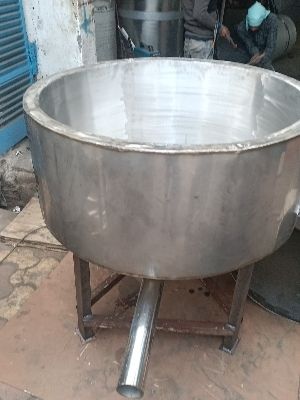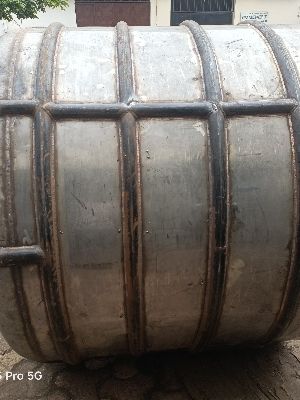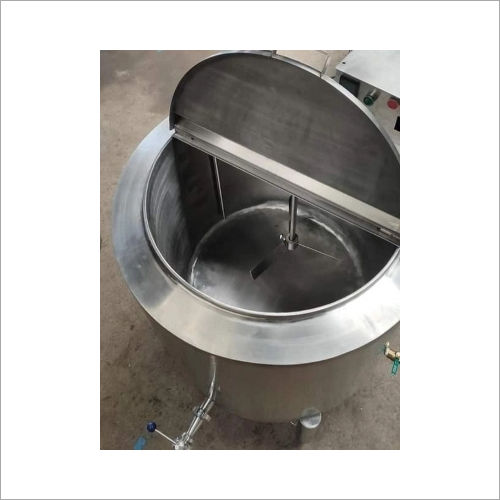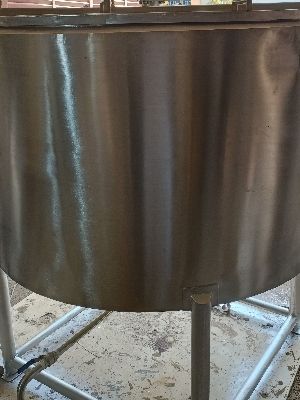Conical Vat
Product Details:
- Product Type Mixing type processing
- General Use For use in Pharma industries,dairy industries, bakery,chemical industries,honey processing industries,hurbal processing industries etc
- Material Stainless Steel
- Type Food Processors Snacks Extruder
- Capacity 50 kg to 1000 kg Kg/day
- Weight (kg) 130 kg Kilograms (kg)
- Computerized Yes
- Click to View more
Conical Vat Price And Quantity
- 25000.00 INR/Piece
- 1 Number
Conical Vat Product Specifications
- Food Processors Snacks Extruder
- 1000mm*500mm*500mm Millimeter (mm)
- Manual
- 130 kg Kilograms (kg)
- Yes
- 440 Volt (v)
- Barley
- 12 month
- Other
- No
- Low Noice ECO Friendly Lower Energy Consumption Compact Structure High Efficiency
- Stainless Steel
- For use in Pharma industries,dairy industries, bakery,chemical industries,honey processing industries,hurbal processing industries etc
- Mixing type processing
- 50 kg to 1000 kg Kg/day
- Free Stand
- 3 hp Horsepower (HP)
Conical Vat Trade Information
- Cash Against Delivery (CAD) Cash on Delivery (COD) Cash Advance (CA) Cash in Advance (CID) Days after Acceptance (DA) Cheque Delivery Point (DP) Letter of Credit at Sight (Sight L/C) Telegraphic Transfer (T/T) Western Union Letter of Credit (L/C)
- 2 Number Per Week
- 10 Days
- Sample costs shipping and taxes has to be paid by the buyer
- Asia Australia Central America North America South America Eastern Europe Western Europe Middle East Africa
- All India
Product Description
A conical-shaped container or jar, normally wider at the top and narrowing towards the bottom, is referred to as a conical vat. It is frequently utilised in a variety of sectors for operations like mixing, storing, fermenting, and settling.
The characteristics and advantages of a conical vat are as follows:
Features of Conical Vat:
1. Conical Shape: The characteristic conical shape of the vat offers practical benefits, such as better mixing effectiveness and solids settling. The bottom's tapered shape makes it simple to collect and remove things that have accumulated.
2. Conical vats can be made of a variety of materials, such as stainless steel, plastic, or fibreglass, depending on the requirements of the individual application. The choice of materials guarantees compatibility with the contents and acceptable hygienic requirements.
3. Conical vats are available in a variety of sizes and capacities to meet the needs of various production processes. They may be small vessels for use in laboratories or massive tanks for use in activities on an industrial scale.
4. Vats are furnished with inlet and outlet ports for the admission and escape of materials. For easy connection to other pieces of machinery or pipes and controlled flow, these ports may have valves or fittings.
5. Temperature Control: Conical vats can be built with insulation or cooling/heating jackets, depending on the application, to regulate and maintain desirable temperatures throughout processes like fermentation or storage.
Benefits Conical Vat:
1. Effective Mixing: The conical form of the vat encourages effective mixing by allowing the contents to move and circulate more easily. As a result, liquids, solids, or a combination of both are blended uniformly.
2. Settling and Separation: The conical vat's tapering bottom encourages the sediment to settle, which makes it simpler to separate and remove it from the liquid phase.
3. Space Optimisation: Because of their design, conical vats are space-efficient. The footprint is reduced thanks to the tapering design, which nevertheless leaves enough room for processing or storage needs.
4. Simple Drainage: The conical bottom of the vat allows for perfect liquid drainage, assuring little remaining material and making cleaning between batches simple.
5. Conical vats have a wide range of uses in the food & beverage, chemical, pharmaceutical, and wastewater treatment sectors. They are employed during procedures like ingredient mixing, beverage fermentation, solids settling, and liquid storage.
6. Vats are often built from sturdy, corrosion-resistant materials that are also simple to clean and uphold sanitary requirements. Thus, long-term dependability and hygienic functioning are guaranteed.
7. Conical vats may be fitted with monitoring equipment, such as temperature probes or level sensors, in order to monitor and regulate the process variables and achieve the best possible results.
Conical vats provide effective mixing, settling, and storage options in a compact shape. They are valuable assets in a variety of industries where regulated material processing, storage, and separation are necessary because of their adaptability, toughness, and ease of maintenance.








 Send Inquiry
Send Inquiry Send SMS
Send SMS Call Me Free
Call Me Free